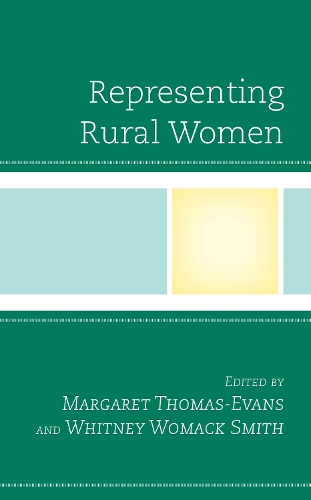
Representing Rural Women
(Paperback)
Publishing Details
Representing Rural Women
By (Author) Whitney Womack Smith
Edited by Margaret Thomas-Evans
Contributions by Agatha Beins
Contributions by Laurie J. C. Cella
Contributions by Jim Coby
Contributions by Nancy Cook
Contributions by H. Louise Davis
Contributions by Amy Easton-Flake
Contributions by Julie R. Enszer
Contributions by Eli Erlick
Bloomsbury Publishing PLC
Lexington Books
6th July 2021
United States
Classifications
Professional and Scholarly
Non Fiction
Feminism and feminist theory
Rural communities / rural life
Gender studies: women and girls
Literary studies: c 1900 to c 2000
305.420973
Physical Properties
Paperback
256
Width 154mm, Height 219mm, Spine 19mm
386g
Description
Representing Rural Women highlights the complexity and diversity of representations of rural women in the U.S. and Canada from the nineteenth to twenty-first centuries. The 15 chapters in this collection offer fresh perspectives on representations of rural women in literature, popular culture, and print, digital, and social media. They explore a wide range of time periods, geographic spaces, and rural womens experiences, including Mormon pioneer women, rural lesbians in the 1970s, Canadian rural womens organizations, and rural trans youth. In their stories, these women and girls navigate the complex realities of rural life, create spaces for self-expression, develop networks to communicate their experiences, and challenge misconceptions and stereotypes of rural womanhood. The chapters in this collection consider the ways that rural geography allows freedoms as well as imposes constraints on womens lives, and explore how cultural representations of rural womanhood both reflect and shape womens experiences.
Reviews
This collection addresses how rural women, long overlooked by literary scholars, have been represented by others and themselves in various mediums from literature to social media. Anyone interested in rural women, past and present, the spaces they inhabit and symbolic imaginaries, will find it fascinating as it challenges preconceived notions about women and rurality. -- Catharine A. Wilson, Redelmeier Professor in Rural History, University of Guelph and Co-Chair of the Rural Womens Studies Association
I found this work engrossing, fascinating, and insightful. Encompassing themes of race, class, and sexuality, it shows that cultural representations of being female and rural are myriad, complex, and multi-faceted. It offers new ways for seeing and understanding rural womens experiences. The perceptive analyses here of how diverse rural female figures have alternatively found comfort, belonging, isolation, violence, and power offers a potent corrective to notions of rural worlds as monolithic, irrelevant, or pass. This is a wonderful and incredibly moving book. -- Nancy K. Berlage, Texas State University
Spanning over a century in the US and Canada, Representing Rural Women challenges our ideas of who rural women are and what they do. Through various media, representations of rural women and by rural womensuch as Hurricane Katrina survivors, lesbians in the 1970s, fashion bloggers, trans girls, those who migrated, and morecomplicate what it means to be a rural woman. Authors from a range of disciplines remind us at every turn of the multiplicity of rural experiences that counteract the way rural lives are narrowly depicted in public discourse. -- Charlotte Hogg, Texas Christian University
Author Bio
Margaret Thomas-Evans is associate professor and chair of the Department of English at Indiana University East.
Whitney Womack Smith is professor of English and chair of the Department of Languages, Literatures, and Writing at Miami University Regionals, Ohio.
